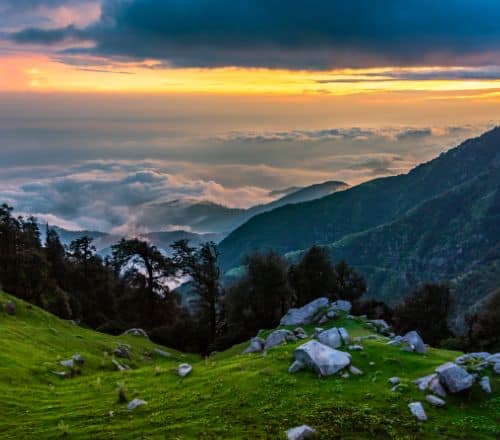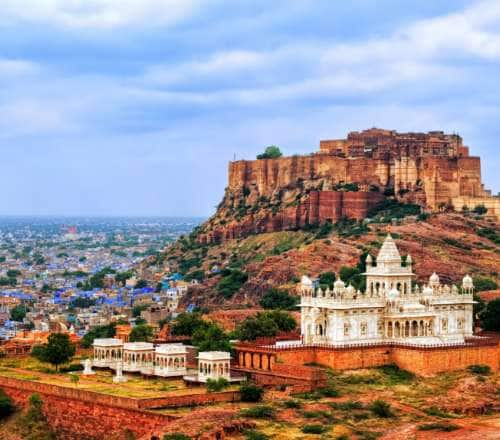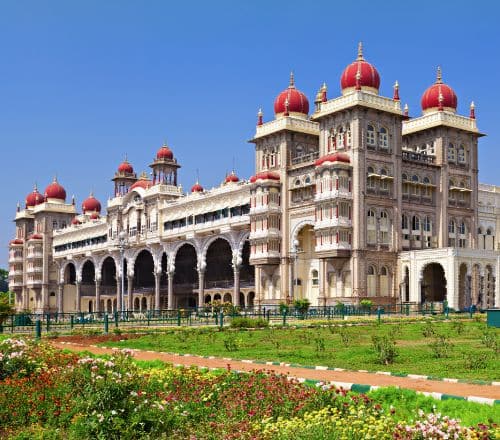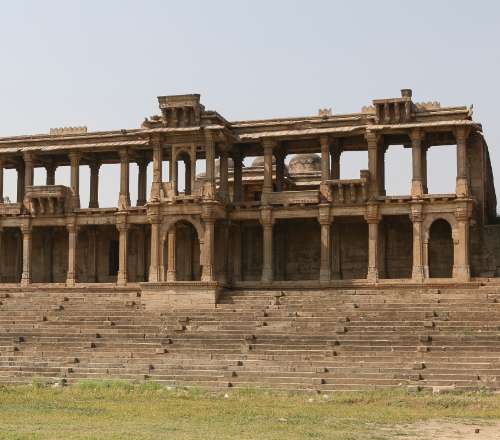Stay logged in to proceed with bookings, orders and offers.
On changing the terminal, you will loose items in your cart. Are you sure you want to change your terminal?
From intricate embroidery to vibrant pottery, discover the soulful art of Punjab's craftsmen.
Situated in the northwestern part of India, Punjab is more than just its vast mustard fields and delectable cuisine. This culturally rich state has a legacy of arts and crafts. The traditional arts and crafts of Punjab have earned world-class acclaim over the years owing to the dexterous and skilled craftsmanship of its artisans. Their artistry is reflected in everyday apparel, footwear, accessories, curtains, and carpets among other objects.
In rural Punjab, mud work is a popular form of artwork that is used in home decor and during renovation. It involves mud-plastering the house walls and then creating designs using paint on the mud-clad surface of the walls.
Another highlight here is metalwork — carpenters in Punjab are known for their exceptionally crafted peerians or peeras, wooden toys, and decorative boxes. Embroidery is another extensively practised craft form, with phulkari being an intricate needlework that is mainly done by village girls.
Read More
Read Less
The artisans of Punjab create beautiful dolls that reflect the vibrant culture of the state. The handicraft industry is one of the most promising and lucrative sectors in Punjab.
These dolls come in various types and sizes, showcasing the artistic calibre of the artisans here. Chandigarh is the most flourishing centre of doll-making in Punjab. These colourful dolls are popular across the world and tourists often buy them as a token of appreciation for their loved ones.
Phulkari is a famous traditional weaving pattern of Punjab that has been highly popular with women since the 15th century. It is one of the most well-known handiworks in India as well as abroad, famous for its floral motifs.
Phulkari is mostly woven onto shawls and dupattas. Sometimes the base cloth is entirely covered with intricate needlework which is popularly known as bagh (a garden full of flowers). The smaller the stitches, the finer and better the phulkari work. The stitches are done horizontally, vertically, and, sometimes, diagonally to create a fine outcome of light and shade.
Artisans create different designs and motifs using needlework on a piece of cloth. Bright-coloured threads in shades of red, crimson, blue, pink, green, yellow, and orange are generally used for creating phulkari.
Peedhies are beautifully decorated, comfortable low-seating stools which are among the splendid handicraft products of Punjab. In the past when the concept of modular or fancy kitchens was not there, Punjabi women used to sit on these stools to carry out their daily tasks.
Peedhies are still in use not only in Punjab but also across India. The legs of such stools are made of wood and are beautifully decorated with colourful threads to give them a stunning look.
Paranda is a colourful hair accessory that is typically worn by women in Punjab. This traditional handicraft accentuates the beauty of their long hair. Women usually plait their hair and tie a paranda at the end. Parande is made of silk threads and is available in various colours and designs.
Mud work is an ancient practice in Punjab that involves transforming dull objects into stunning works of art. In the past, the walls of the houses were plastered with mud to keep evil spirits away. The art of designing mud walls with painted motifs is known as Chowk-Poorana. The mud works are mainly carried out during the festivals of Diwali, Navaratna Poorna, Ahoi, and Karva-Chauth.
Craftsmen in Punjab create stunning folk toys that reflect the rich cultural tradition of this dynamic and vibrant state. The folk toy industry in Punjab contributes greatly to the finances of the state's art and craft industry. This tradition of making folk toys has been followed in Punjab for ages, representing the imaginative creations of its artists.
Women in Punjab are mainly associated with the weaving of durries. Made of cotton, durries are commonly used as bed or floor spreads. Durries feature various types of motifs, such as checks, squares, and stripes.
Embroidery or needlework is known by different names associated with certain aspects of life. It is part of the daily life of village women in Punjab. Embroidery is mainly done on salwars, scarves, dupattas, shirts, and bedspreads. The feminine touch of embroidery in Punjab adds a special quality to their artwork.
The people of Punjab are often seen flaunting traditional ornaments during festivals and other important events. Since time immemorial, jewellery has been seen as a symbol of power, status, and wealth in society. Today, the value of conventional and antique jewellery pieces is increasing. Moreover, such classic jewellery pieces are more in demand today than ones with modern designs.
The people of Punjab have always been attracted to heavy jewellery and several industries cater to their needs. The state's traditional ornaments display the intricate designs and the opulent taste of the people of the state.
For a long time, carpenters in Punjab have crafted different objects using wood. Wooden handicrafts from Punjab are highly acclaimed across the world. Tourists visiting Punjab often purchase handmade wooden items to take back home as mementoes.
Woodenwork is a common occupation in the villages of Punjab. The carpenters make magnificent beds with mirror-fitted backrests and elaborately carved legs, which are known as pawas.
These carpenters are also known for their skills at crafting peeras and Persians, which are comfortable wooden low seats found in every house in the villages of Punjab.
In the impressive collection of art and crafts of Punjab, one name that deserves special mention is frescoes and murals. These types of paintings are usually done on permanent surfaces, such as ceilings, gates, and walls.
The indigenous basketry work of Punjab is fascinating and highly popular across the world. Punjabi women have traditionally practised the weaving of baskets and other similar objects for years.
Initially, baskets were made by villagers in Punjab for household use. In recent years, these handicraft items are used for decorative purposes or as showpieces in urban homes.
Artisans shave thin straws from the grass to weave carpets, hand fans, rugs, mats, and curtains. Hand fans are called Peshawari pakkhe while the smaller ones are known as Kundaldar pakkhe. These fans have beautifully curled ends and the intricate work done on them is exquisite. Most tourists end up buying these fascinating hand fans as mementoes or home decor pieces.
Punjab is the leading hub of arts and crafts in India. Most of the state's handicrafts are rich and colourful, which aligns well with the culture of Punjab. The artistic talent of Punjab is evident in a variety of handicrafts, from heavy traditional ornaments to folk toys, embroidery, mud work, and woodwork.





The Adani One expressly disclaims all liability, direct and indirect, in respect to actions taken or not taken based on any or all the contents of this Blog. The Blog is an opinion of the contributor based on the collation of data from various sources and is provided only for information purpose. Adani One does not canvass, advertise, solicit, invite or induct for any product, merchandise, information, brand or any other materials mentioned in the Blog, nor does it obtain any monetary benefit from the same. Reader is advised to read and apply his/her intellect and discretion in this regard. Any Intellectual Property mentioned in this blog belongs to the rightful owner. We do not intent to claim any interest over the same.